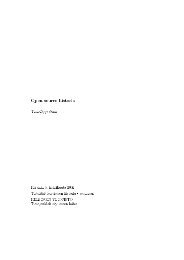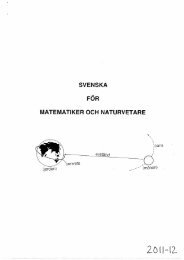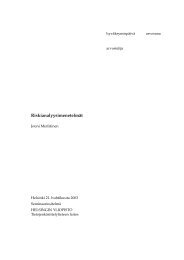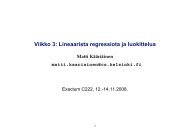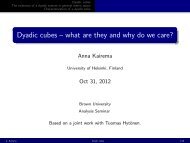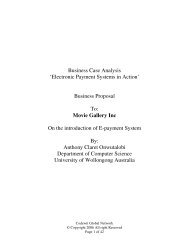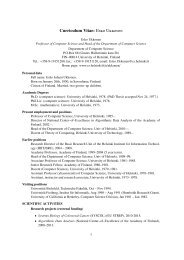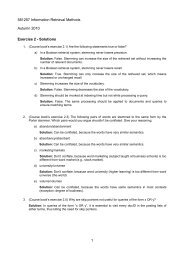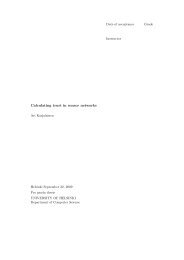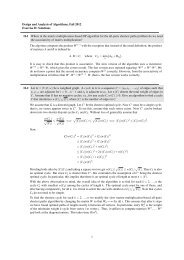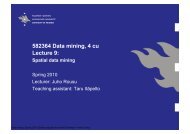Toni Sihvonen (order #92780) 62.142.248.1
Toni Sihvonen (order #92780) 62.142.248.1
Toni Sihvonen (order #92780) 62.142.248.1
Create successful ePaper yourself
Turn your PDF publications into a flip-book with our unique Google optimized e-Paper software.
<strong>Toni</strong> <strong>Sihvonen</strong> (<strong>order</strong> <strong>#92780</strong>) 6<br />
” ______._----<br />
4. Detail Names: For each Name, in <strong>order</strong> from the<br />
most recent to the oldest, perform the following steps in<br />
<strong>order</strong>.<br />
4A. Find Name’s Status and Funeral: Roll 3d6 and<br />
compare the result to your total number of names using<br />
the Ancestor Staus table in the sidebar on the preceeding<br />
page (use the lowest row that counts).<br />
When checking your father, he may still be alive: check<br />
the Father’s Survival Table (Pendragon page 52).<br />
The different grades of Saxon burial are explained on<br />
page 129. Similar grades of funeral according to rank<br />
apply in every culture; for Christian knights, a sumptuous<br />
burial probably means entombment in a cathedral.<br />
Players are encouraged to mark likely burial places on the<br />
campaign map: everyone should know where to find<br />
their ancestors.<br />
Example: Oswy’s father is dead and received no noteworthy<br />
burial. He is buried in the Haestingas common<br />
burial grounds.<br />
4B. Choose Name: Choose a fitting name for your for<br />
your ancestor from the various cultural names. If the<br />
name is Great you can choose it in this fashion or, better<br />
yet, pick it from the pages of history. Every name mentioned<br />
in Pendragon histories or gazetteers, or the books<br />
of history and legend cited in our bibliographies, is a<br />
Great Name. Do not pick a name that puts you in the<br />
immediate family of a living major hero or national king<br />
(no extra brothers for Beowulf, Lancelot, or Arthur).<br />
Most names are your direct male ancestors. This does not<br />
necessarily mean that all male ancestors are named in the<br />
lineage: some may have been skipped or switched with<br />
other relatives for reasons of prestige. Up to a quarter of<br />
your lineage names can be collateral or female ancestors,<br />
instead. Picts, Erainn, Cimbri, Finnar, and other “primitive<br />
cultures” can ignore the direct male line altogether.<br />
Remember that you automatically add your father’s<br />
name to the lineage in your birth phase. Other automatic<br />
lineage names come from character generation: you<br />
may already be descended from a Saxon god or a Celtic<br />
clan chieftain. Include all these names in your lineage<br />
regardless of what you rolled.<br />
Example: Oswyi late father was named Dudda. Dudda is<br />
not remembered by history - but he will be remembered<br />
by Oswy.<br />
4C. Choose Associated Event: Assign the name to an<br />
event in the Historical Phase when he flourished: thus a<br />
Saxon name from Phase -2 could have participated in any<br />
one of the events listed for Saxons in that Phase. With the<br />
GM’s discretion, you may create an alternative event for<br />
that Phase - raidingtrading voyages, quests into the<br />
Otherworld, dynastic weddings or feuds, pagan spellcasting<br />
or Christian evangelism -that is historically and culturally<br />
appropriate.<br />
Decide how your ancestor participated in that event. If he<br />
was a Great Name, this may be already known. If not, be<br />
reasonable: if you descend from common warriors or<br />
ceorls, your ancestors probably weren’t leading battles or<br />
forging treaties - but they may have been retainers of<br />
the Great Names who were.<br />
Once you decide, write this down in a simple statement<br />
beginning, “Son of [name] who.” and followed by no<br />
more than seven words (“Son of Horsa who killed<br />
Katigern but himself died at Aegelesthrep”). A name<br />
counts as one “word” despite its length (“King Uther<br />
Pendragon”).<br />
For Mythic Phase names, you can either skip these details<br />
or, working with your GM, construct some likely events<br />
from your culture’s mythology and from late Roman history<br />
- the “Age of Migrations” when folk like the Franks,<br />
Germans, and Huns seized their territories in the crumbling<br />
Roman Empire. Mythic Age events and names can<br />
follow any <strong>order</strong>, but only the last name can be a god.<br />
Example: Because Oswy comes from Haestingas, his player<br />
decides to consult the Haestingas Chronicle (Chapter 5)<br />
as well as the Saxon Chronicle (Chapter 2). Dudda, it is<br />
decided, was a simple ceorl who brought a great stag for<br />
the wedding feast of Anlaf and Glesni in 451. “I am Oswy<br />
son of Dudda, who helped Anlaf wed the Roman<br />
princess. ”<br />
5. Make Lineage: String together all the statements created<br />
by steps 3A-C into a consecutive lineage.<br />
Example: Oswy’s player has decided that the Phase -3<br />
ancestor was a Saxon federate living near Anderida during<br />
the great Irish raids. The Mythic Phase ancestor was a<br />
mercenary warrior who fought against Magnus Maximus.<br />
“I am Oswy son of Dudda, who helped Anlaf wed the<br />
Roman princess, son of Ingeld, who slew many Irish<br />
defending Anderida, son of Bassa. who marched with<br />
loyal legions against Magnus.” None of these names<br />
turned out to be Great, but Oswy is very proud of them<br />
anyway.



